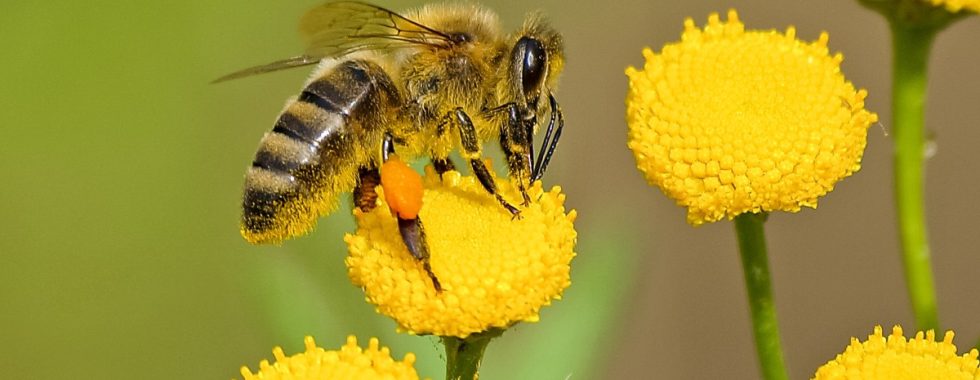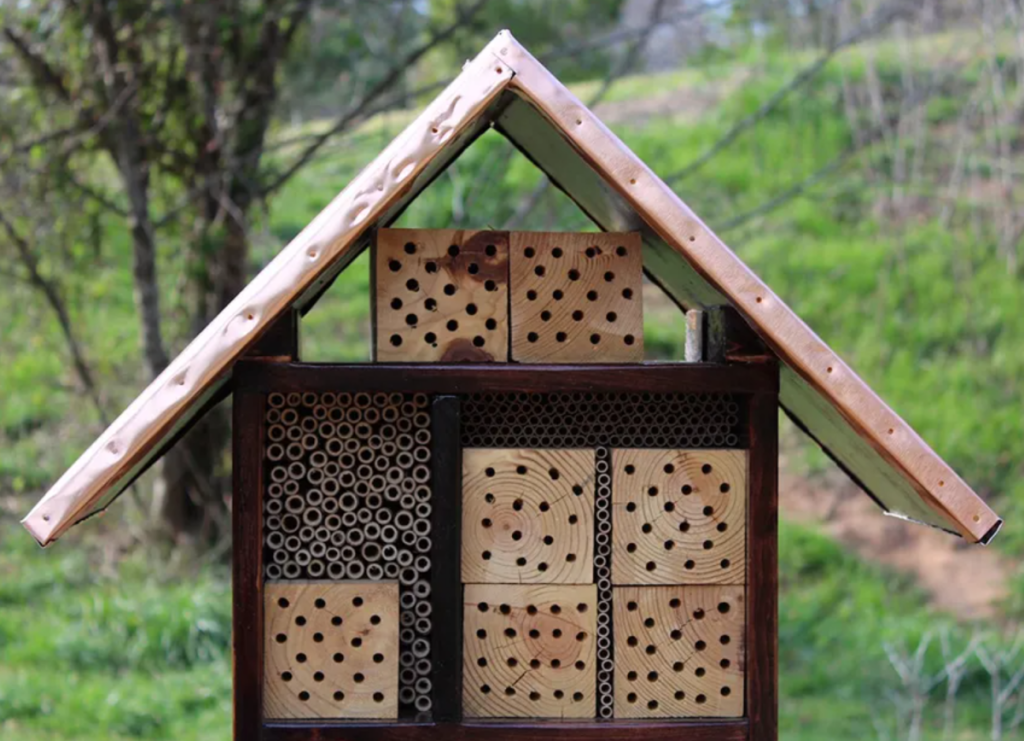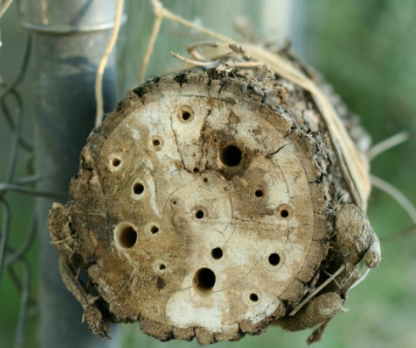Caring for Bees in Winter
Bees are some of the most effective pollinators of wild and cultivated crops in Texas. Without them we wouldn’t have foods like peppers, peaches, melons, berries, cotton, almonds, and more. Have you ever wondered where our bees go after the flowers have gone and the temperature drops below freezing? Just like mammals, these animals have their own incredible forms of hibernation and overwintering methods based on the type of species they are.
When we think of bees, we typically picture them living socially in a big colony or hive. As a matter of fact, though, almost 90% of the bees native to Texas are solitary insects, meaning individuals build nests and live by themselves. Most solitary bees dig burrows or tunnels into well-drained and sunny areas of bare soil. Other bees capitalize on abandoned deadwood beetle tunnels to create their nests in. While you are out for a walk or hike, you may notice a small collection of dirt with a hole on the top. This could be the home of a solitary bee. As they live alone, they are far less likely to come out and sting, as doing so poses a huge risk to them. These insects, such as carpenter and mason bees, will seal off their nests with a supply of nectar and pollen to keep their eggs safe and warm during the winter as they develop.
A common exception to most Texan bees being solitary, the fuzzy bumble bees we hear buzzing around and see hovering over Texas wildflowers are social insects that live in colonies throughout the year. As the weather gets colder, bumble bee colonies die back to only the queen, who goes into a solitary hibernation. Similar to bears, the queen has prepared by building up her body’s fat reserves to live off of while hibernating. Does the queen stay and hibernate in her nest? No. She finds a place in or on the warmer ground to hunker down during the winter. Common places you may find queen bumble bees hibernating near the ground are grass thatches (the portion of dry, dead grass at the base of a grass cluster), compost piles, abandoned rodent burrows or bird nests, and brush piles. After winter has passed, the queen bee emerges from her warm, protective hiding place, feasts on spring flower nectar, and builds a new colony. European honey bees are also social insects, but unlike bumble bees, they bundle together in their hives to stay warm during the winter. Honey bees eat stored honey for energy and cluster tightly together around the queen to maintain a hive temperature of around 93-97 F. When the temperature outside drops, the bees vibrate together to keep themselves warm.
If you’d like to help bees get through the winter, here are some easy steps you can take in your own backyard or patio:
- Plant a prairie or a pocket prairie with native wildflowers and grasses to help provide food and habitat for pollinators. For patios, fill planters with native wildflowers and grasses.
- Do not rake or clear fallen autumn leaves in your yard, OR leave a few small piles of leaves around your yard.
- If you are clearing brush from your property, collect brush into a pile and leave it over the winter. This provides potential habitat for bees, small mammals, and birds.
- Create a bee hotel out of unused timber or wood. Make sure to do your research beforehand, as some bee hotels can cause more harm than good if made incorrectly. Here’s a great guide for creating your own bee hotel. Here’s an article that provides great tips for creating a high quality bee habitat.
Written by Rachel Seets, SMGA Outreach Committee member.




